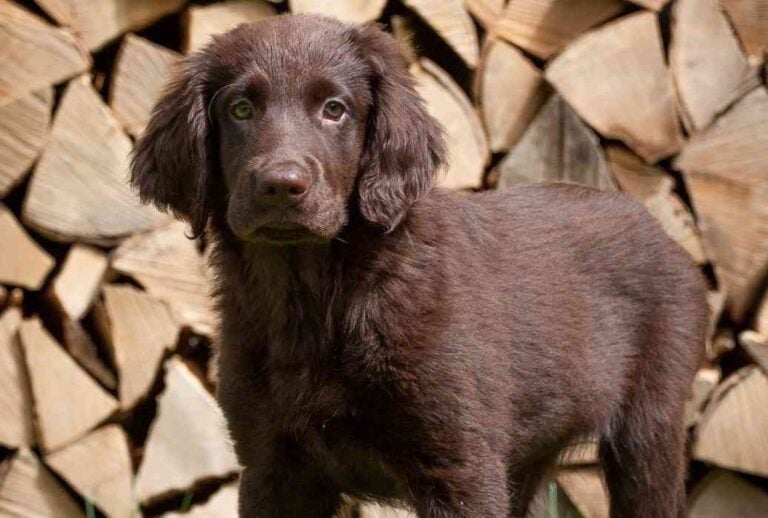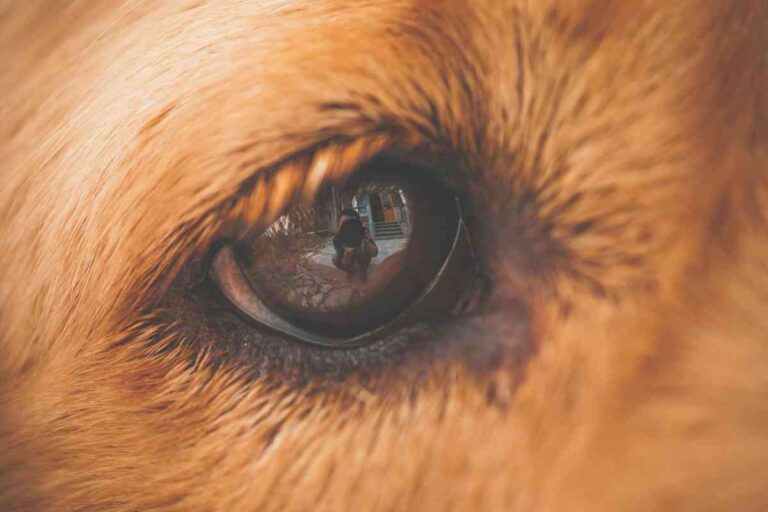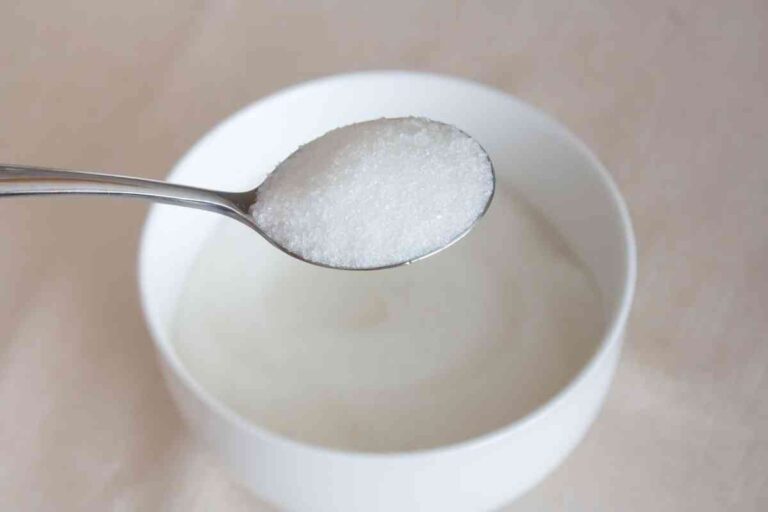Golden Retriever Colors: A Guide to Shades and Patterns
Golden Retrievers, known for their friendly demeanor, come in a fascinating array of colors. This article delves into the vibrant world of Golden Retriever shades, from the classic golden to the rare cream, each hue telling a unique story of this beloved breed. Discover the beauty and significance behind their varied coats, and see how each color reflects a distinct aspect of their charming personalities. Join us in exploring the colorful spectrum of Golden Retrievers, a journey that promises to deepen your appreciation for these magnificent dogs.

Golden Retrievers display a range of colors, primarily golden, cream, and dark golden. The golden shades vary from light to dark, with the cream being particularly light and not always recognized in show standards. These colors can slightly change as the dog ages, but the basic hue remains consistent throughout their life.
Related Post: When Do Golden Retrievers Get Long Hair and Full Coats?
Overview of Golden Retriever Colors
Golden Retrievers are renowned for their stunning and varied coat colors, which contribute greatly to the breed’s overall appeal. Recognized by the American Kennel Club (AKC), the standard Golden Retriever colors include:
- Light Golden: A pale, creamy shade.
- Golden: The classic, rich color that is often associated with the breed.
- Dark Golden: A deeper, more intense hue.
As a long-time Golden Retriever owner, I’ve found that the light golden Retrievers often turn heads with their almost luminescent coats, while those with darker shades are frequently complimented for their regal appearance.
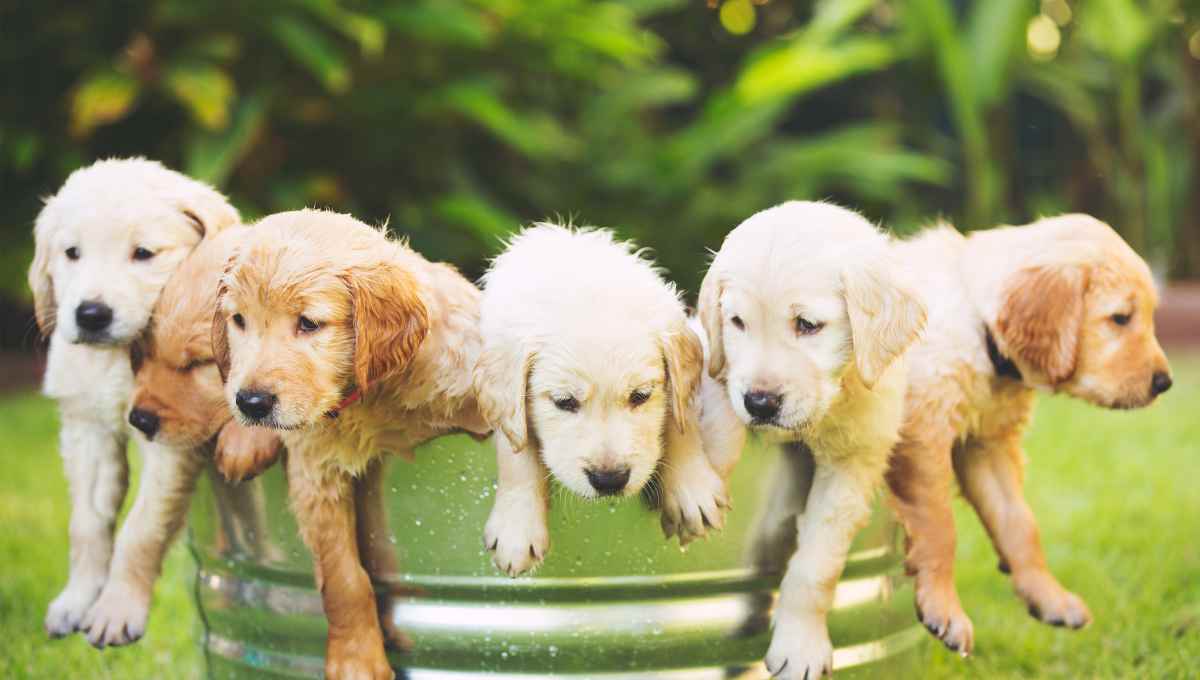
The color spectrum of a Golden Retriever’s coat can also host a range of other shades, though not formally recognized by the AKC as the breed standard. The breed’s coat is a point of beauty and a functional feature, offering insulation and protection.
It is important to note that while color variations exist, they do not affect the Golden Retriever’s temperament or suitability as a family pet.
| AKC Recognized Colors | Description |
|---|---|
| Light Golden | A lighter, cream-colored coat |
| Golden | The traditional, well-known golden hue |
| Dark Golden | A deeper golden color, tending towards reddish or mahogany |
Throughout the years, the glistening golden shades of my companions have been a constant source of adoration and warmth. No matter the precise shade, these marvelous dogs have been a testament to the breed’s enduring charm.
Breed standards emphasize uniformity and quality, and while color is a factor in competitions and shows, all Golden Retrievers share a common lineage and traits that make them beloved pets worldwide.
Standard Golden Retriever Colors

The American Kennel Club recognizes three main coat color variations within the standard for Golden Retrievers. Each shade represents a distinct look within the breed and is a significant factor for breeders and shows.
Light Golden Retrievers
Light golden retrievers exhibit a pale, creamy color that may sometimes be mistaken for white under certain lighting.
The color is also referred to as light gold, and as a seasoned Golden Retriever enthusiast, I’ve noticed that pups of this shade can often be amongst the most sought-after by families for their soft appearance.
Dark Golden Retrievers
Conversely, dark golden retrievers have a deep, rich color, resembling a lustrous auburn. This darker coat color can be an eye-catcher at dog shows due to its vibrant hue. I’ve always found that my dark golden retrievers seem to have an illustrious sheen to their coat, especially in the sunlight.
Classic Gold Retrievers
The classic gold color is what most people envision when they think of a Golden Retriever. It’s not too pale and not too dark—I like to think of it as the ‘just right’ gold.
Breeders often aim for this mid-shade since it’s synonymous with the iconic Golden Retriever look. Over the years, my classic gold retrievers have had this warm, golden tone that truly stands out in the breed.
Less Common Golden Retriever Colors
While most people are familiar with the traditional shades of gold in Golden Retrievers, there are less common coat colors that are just as striking and breed-worthy.
These include cream, white, and red colors, which may not be as widely recognized but have their unique appeal and characteristics.
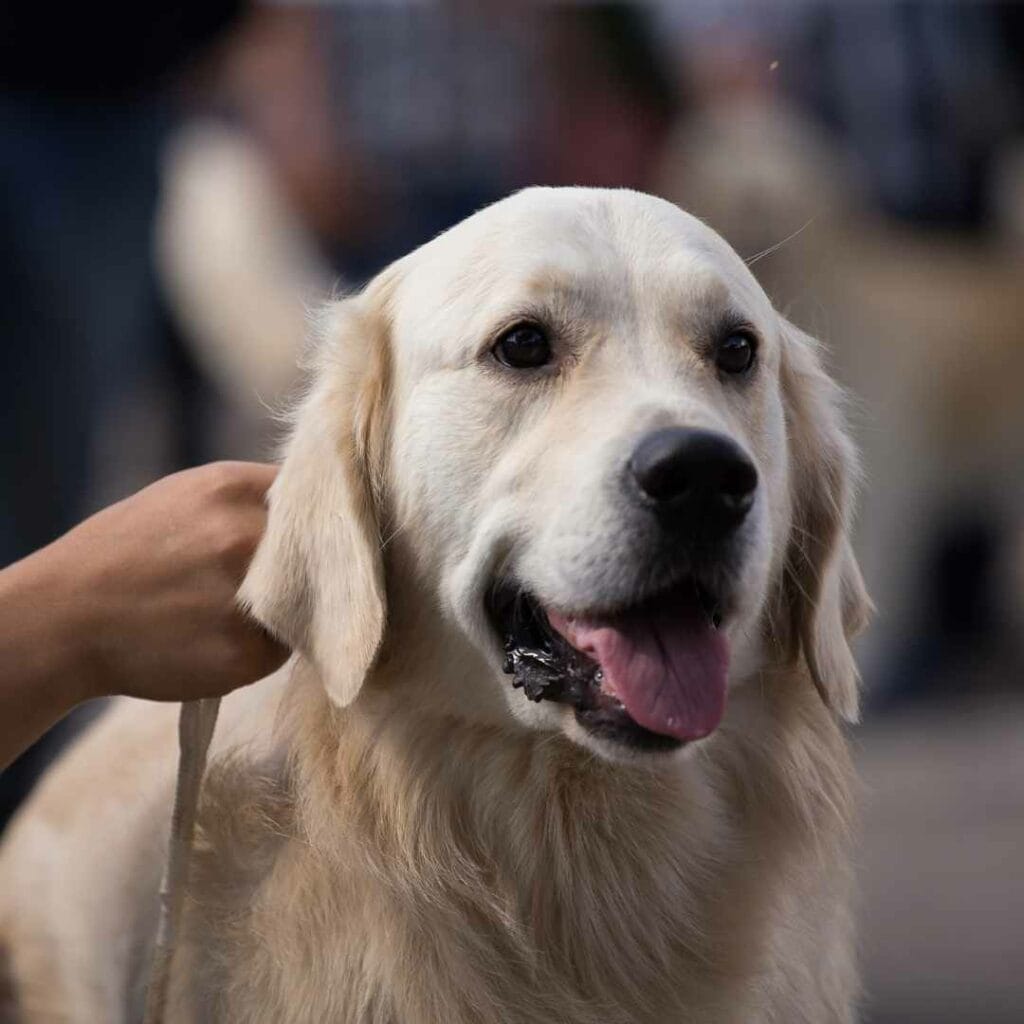
Cream Golden Retrievers
Cream Golden Retrievers, sometimes known as English Cream Golden Retrievers, boast a coat color that ranges from light ivory to a rich cream. This paler coloration is linked to the genetics of the breed and is particularly prominent in dogs bred from English lines.
The cream color is a soft, almost white shade that can sometimes cause them to be mistaken for a different breed. One of my good friends mentioned that she has noticed that her cream-colored Golden has drawn quite a lot of admiration for her distinct, almost white coat, although she’s as Golden Retriever as they come, through and through.
White Golden Retrievers
White Golden Retrievers, or English Cream Golden Retrievers, exhibit a coat that is as close to pure white as the breed standards allow.
It should be noted that the American Kennel Club (AKC) does not recognize pure white as a standard color for the breed, and these dogs are generally categorized as cream. However, their striking white coats can make them stand out in a crowd.
From personal experience, I’ve found that my white Golden Retriever requires just as much grooming as the others to keep her stunning coat clean and vibrant.
Red Golden Retrievers
The Red Golden Retriever has a rich, mahogany red coat color that may remind some of the Irish Setter.
This vibrant red coloring is less common and is not part of the breed’s standard color palette as per show standards, yet it has a unique beauty that captivates many Golden Retriever enthusiasts.
Our 1-year-old boy, Banks, is a deep Red Golden whose color is so deep it almost glowed; his coat color certainly turns a lot of heads at the dog park. Their plush coats can range in shades from a subtle, golden red to a deeper mahogany red, adding to the diversity of the breed’s coat colors.
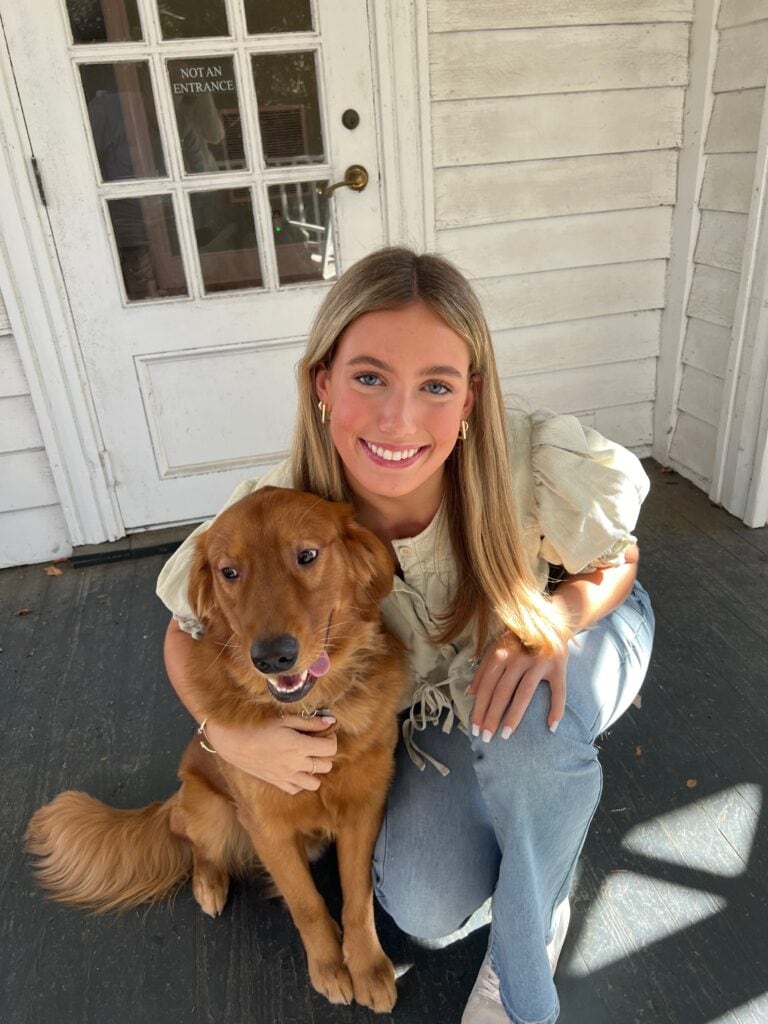
Color Genetics And Breeding
The coat color of a Golden Retriever is a fascinating product of genetics. As a longtime Golden Retriever owner, I’ve come to appreciate the science behind these gorgeous hues. Eumelanin and Pheomelanin are the two primary pigments in dogs’ fur. The former determines black or brown colors, while the latter results in red/yellow or cream shades.
- Basic Genetics:
- Eumelanin (E) gene: Black/Brown coloration
- Pheomelanin (Ay) gene: Red/Yellow or Cream coloration
When breeders pair two Golden Retrievers, the puppies inherit a combination of these genes from their parents. As a breeder selects for certain traits, they can somewhat predict the resulting puppies’ coat colors. However, surprises can occur due to hidden or recessive genes.
The American Kennel Club (AKC) standard for Golden Retrievers recognizes three main colors: gold, light golden, and dark golden. This has become a benchmark for many breeders, guiding their breeding programs to produce purebred dogs that align with this standard.
- AKC Recognized Colors:
- Gold
- Light Golden
- Dark Golden
Mixed breed Golden Retrievers might exhibit varied and sometimes surprising colors due to their diverse genetic backgrounds.
My prior Golden, Buddy, was the offspring of a light golden and a dark golden. While we expected a blend, he surprised us with a luscious, reddish hue that was stunning in the sunlight.
Responsible breeding practices are crucial. They ensure the dogs’ health and well-being and maintain the integrity of the breed’s characteristics.
Remember, coat color is just one aspect of these amazing companions, and each one, regardless of their shade, can bring immeasurable joy and love to our homes.
Color Changes Over Time
Golden Retrievers are renowned not just for their friendly demeanor but also for their beautiful coats, which undergo significant color changes from puppyhood into adulthood. Owners often anticipate these changes, as they watch the transformation of their pet’s fur over time.
Puppy to Adult Coat Transition
When I first brought my golden retriever puppy home, his fur was a soft, and already had the more redish tone that seemed to glow in the sunlight. As he approached the six-month mark, I noticed the first signs of his coat darkening, giving way to a warm red hue.
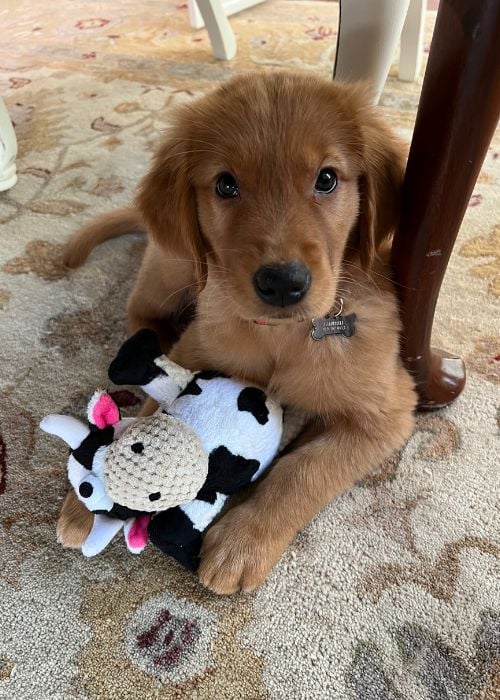
The transition from a puppy’s softer, lighter coat to the adult’s denser, darker one typically begins around this age and may continue until they’re about three years old.
It’s not uncommon for golden retriever puppies to have a significantly lighter or darker coat color than what they will have as full-grown adults.
Points of reference, like the color of the fur behind their ears, can suggest their eventual mature color. For instance, the ears of my puppy were a slightly darker shade, which eventually matched his adult coat.
Throughout their puppyhood, these puppies can show a variety of shades, from pale cream to a rich golden or even darker tones. As they grow older, some may lighten again, although a deepening in color is more typical.
The process is gradual and can be quite subtle; one morning, you might realize that your golden beauty is no longer a puppy by the lush, amber-tinted coat that has replaced the lighter fuzz of their younger days.
Health and Color
In my years of companionship with Golden Retrievers, I’ve come to understand that coat color has no direct correlation with health. However, the genetics that influence coat color can sometimes be linked to health conditions due to the complex nature of inheritance.
Health Factors:
Some believe that certain colors may be more prone to health issues, but no scientific evidence supports this claim.
All Golden Retrievers, regardless of their coat color, can be susceptible to common health problems such as hip dysplasia, eye conditions, and even cancer, which is unfortunately prevalent in the breed.
- Cancer: Studies have shown that cancer is the leading cause of death in Golden Retrievers. I’ve had the heartbreaking experience of losing one of my Goldens to cancer. It was a challenging time, and my vet assured me that this was not related to her beautiful cream coat but rather a breed-specific predisposition.
- Genetic Diversity: Maintaining genetic diversity within the breed is essential. Reputable breeders often conduct genetic screening to reduce the likelihood of hereditary diseases, not coat color variations.
- Routine Checks: Regular vet check-ups play a critical role in early detection and management of possible health conditions. Whether my Golden is light golden or dark, my vet focuses on their overall health and not the shade of their fur.
In summary, while coat color in Golden Retrievers is determined by genetics, it should not be used as an indicator of health.
As a dedicated owner, my priority is to ensure the well-being of my dogs through proactive healthcare and attention to their lifestyle and nutrition, rather than focusing on the color of their coats.
Grooming Different Coat Colors
As a long-time Golden Retriever owner, I understand that while coat color may vary, the approach to grooming is quite consistent. Regular care is essential to maintain the beautiful coat of a Golden Retriever, regardless of the color.
Shedding And Maintenance
Golden Retrievers are known for their double coat, comprising a soft undercoat and a water-repellent outer coat.
This double coat means they shed moderately year-round and more heavily during the change of seasons. Grooming is more than a cleanliness task; it’s a health check too.
- Shedding: Expect to find hair around your home, on your clothes, and occasionally in your morning coffee. Routine brushing helps minimize excess hair buildup and prevents mats.
- Maintenance: Regular grooming keeps the coat shiny and healthy, reduces allergens, and distributes natural oils.
Feathering, which is the longer hair on the neck, legs, thighs, underside, and tail, requires special attention during grooming to prevent tangles.
My boy Banks has a rich mahogany coat, and my vacuum cleaner is a testament to his shedding. I’ve learned that a thorough brush once a day can make a significant difference.
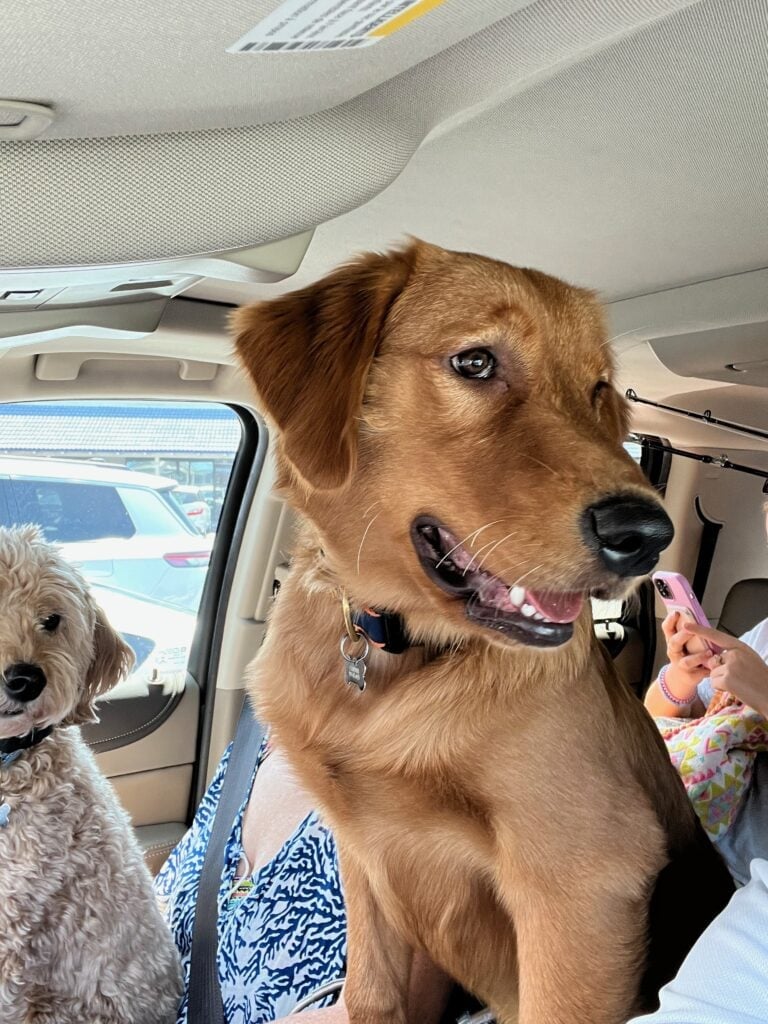
The specific grooming tools you’ll need can depend on your Golden Retriever’s coat condition and color to an extent.
Darker-coated retrievers like Red Goldens may show more shed hair on light surfaces, while lighter coats like Cream Goldens leave evidence on dark clothing and furniture. Understanding your dog’s shedding and grooming needs will keep their coat in the best condition regardless of its color.
Personality and Behavior by Color
Golden Retrievers are renowned for their friendly and tolerant attitude. Despite the different shades their coats may exhibit, their behavior and temperament are largely uniform across the spectrum. These dogs are known to be fantastic family dogs, with a disposition that meshes well with children and other pets.
For instance, light golden coated retrievers often have a gentle and serene outlook, which is consistent with the classic personality of the breed. It’s important to note that coat color does not correlate with personality changes; it’s more related to genetics and breeding. Darker goldens carry the same playful and affectionate traits that are the signature of the breed.
Throughout my years with Goldens, I’ve noticed that regardless of coat color, they share an eager-to-please attitude. It’s this trait that makes them excellent companions and easy to train. Their intelligence and loyal nature translate into a charming and even temperament that makes them versatile in various roles, from assistance work to family pets.
When it comes to coat care, all Golden Retrievers, irrespective of the shade, need regular grooming due to their thick, water-repellent double coat. They are notorious for shedding, but this has no bearing on their personality.
- Bold Goldens: Always energetic, ready for a game of fetch anytime.
- Creamy Companions: Equally affectionate, love cuddling on a lazy afternoon.
With proper training and socialization, you can expect your Golden Retriever to display the quintessential friendly and easygoing personality that they are celebrated for, no matter the hue of their coat.
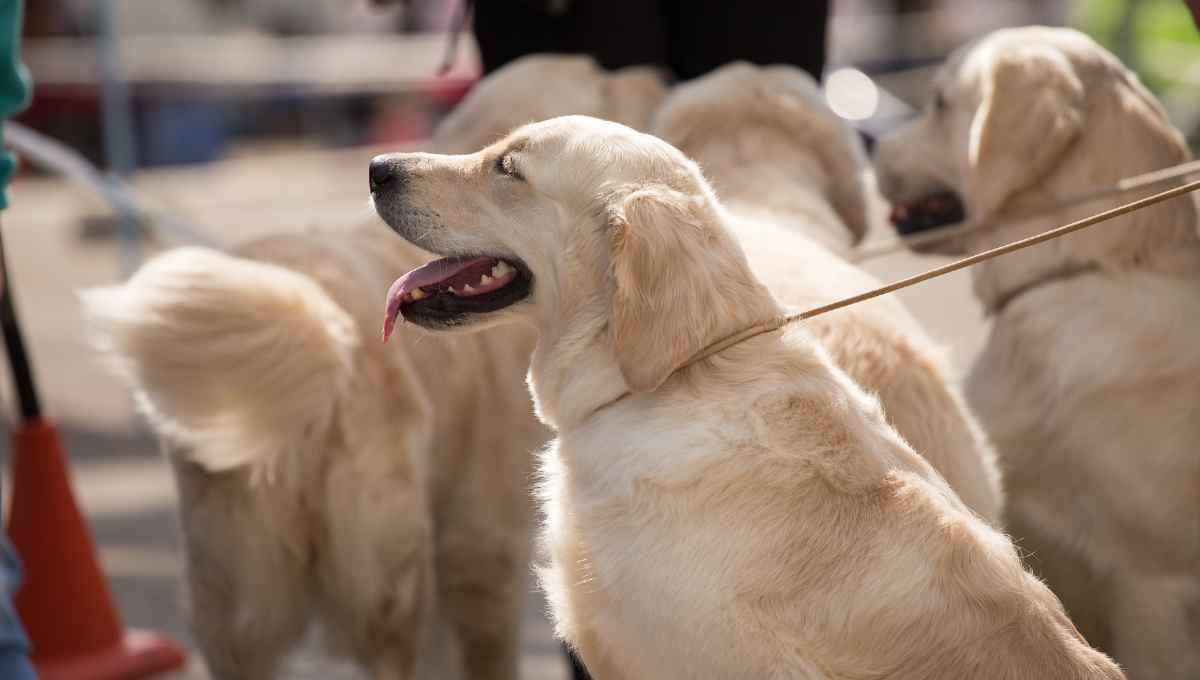
Color Popularity and Trends
Golden Retrievers are a favorite among families for their friendly demeanor and beautiful coats. Over the years, I’ve noticed that certain colors of this breed have fluctuated in popularity, often influenced by trends, media, and personal preference.
My first Golden Retriever had a coat that glistened like the autumn leaves, and I remember how often people would stop me to comment on her stunning red color.
The most widely recognized and popular color is the classic golden which ranges from light gold to dark gold. Truth be told, when speaking to other owners, many report a preference for this iconic golden hue because it closely matches the breed’s name.
Here’s a quick rundown of the popularity trends for Golden Retriever colors:
- Classic Golden: Remains consistently popular, a perennial choice for families.
- Cream: Growing in popularity, notably in Europe.
- Red: Sought after for its unique and rich color but less common.
- Dark Golden: Offers a striking appearance and has devoted fans.
It’s essential to understand that while color trends can give a general idea of popularity, the choice largely comes down to personal preference. Each color has its own charm and is equally capable of winning hearts.
With my latest companion, a cream Golden Retriever, I’ve noticed an increase in admiration for lighter shades, aligning with the rise in popularity.
At the end of the day, the choice of color is subjective, and regardless of coat color trends, a Golden Retriever’s personality and compatibility with its family are what truly matter.
Golden Retrievers in Show Rings
Golden Retrievers are a favorite in show rings due to their beautiful appearance and amiable nature. Show rings governed by the American Kennel Club (AKC) maintain strict breed standards that dictate the acceptable colors and overall appearance of these dogs.
When it comes to coat color, the AKC breed standard recognizes three shades: dark golden, golden, and light golden. The color should be rich, lustrous, and fall within a specific hue range. It’s worth noting that an even coat color is preferred.
- Dark Golden: Deep, golden hues with a reddish tint.
- Golden: Well, golden!
- Light Golden: A pale, cream color that is not too light to be mistaken for white.
The brilliance of coat colors like red or creams close to white are not within the AKC breed standard, excluding them from the show ring. It’s crucial for the shade to be appropriate for the Golden Retriever to avoid penalties in competitions.
The AKC is meticulous when it comes to the Golden Retriever’s grooming before show ring appearances. The Golden Retriever’s double coat should be well-groomed without any signs of trimming that alters the natural outline. The show rings place a heavy focus on the natural beauty and the standard appearance of the breed.
From personal experience, I can’t emphasize enough the importance of thorough grooming and obedience training to prepare a Golden Retriever for the show ring spotlight. It’s both a disciplined art and a celebration of the breed’s exquisite characteristics.

